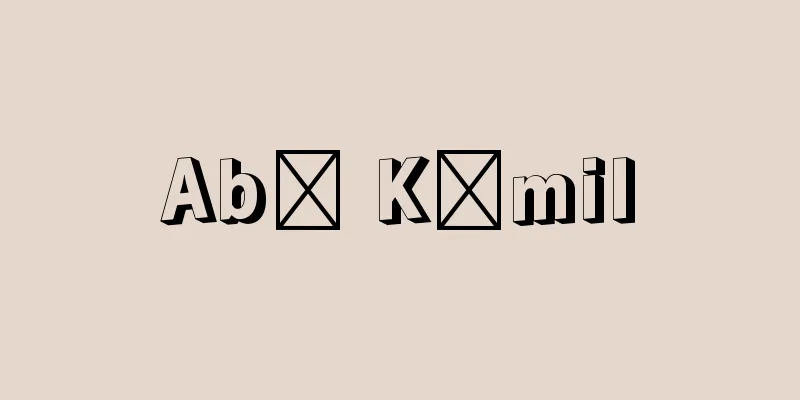aes grave

|
… The first Roman coins were not made of precious metals, as in the Greek versions, but were bronze ingots of a fixed amount, and were minted without stamps. Shortly after 340 BCE, the usual circular bronze coins (aes grave) and silver coins were made. These coins bore the denomination as, and showed the god Janus on both sides, and the prow of a ship on the reverse. … *Some of the terminology explanations that mention "AES Grave" are listed below. Source | Heibonsha World Encyclopedia 2nd Edition | Information |
|
… ローマの最初の貨幣はギリシアと異なって貴金属製でなく,一定量の青銅の延べ金であり,また刻印せずに鋳造した。前340年の直後に通例の円形の青銅貨(アエス・グラウェaes grave)と銀貨が造られた。この青銅貨はアスasを単位とし,表面に両面神なるヤヌス,裏面に船首を表した。… ※「aes grave」について言及している用語解説の一部を掲載しています。 出典|株式会社平凡社世界大百科事典 第2版について | 情報 |
>>: Aesculus pavia (English spelling) Aesculuspavia
Recommend
Green pear - Aonashi
...During the Edo period, Japanese pears were cul...
Environment Agency - Environment Agency
The Environment Agency is a national environmental...
Kim Jae-gyu
...The agency was involved in the Kim Dae-jung in...
Manzai Kyokashu - Manzai Kyokashu
A collection of kyoka poems (Senshu). Compiled by...
Dik-dik (English spelling)
A general term for mammals of the order Artiodacty...
Takemoto Koshijidayu
A Gidayu performer. His second son was a Meiji er...
Red Gland
...There are two types of fish: those in which th...
Hawk Moth - Hawk Moth
An insect of the Lepidoptera family, Sphingidae. I...
hoary basil
...The black-leaved species, Dark Opal, can add a...
Phenol - phenol
Compounds in which a hydroxyl group is bonded to ...
Antarctic Circumpolar Current
⇒Antarctic Circumpolar Current Source: About Shoga...
Akira Ohta
1884-1956 A Japanese history scholar from the Tai...
Organs of touch
…The tentacle bundles are found in the foam-like ...
Kaminus - Kaminus
… [Hiroyuki Suzuki] [Western Chimneys] In Shakesp...
Catena, Vincenzo
[Raw]? Venice Died 1531. Venetian Italian painter....









